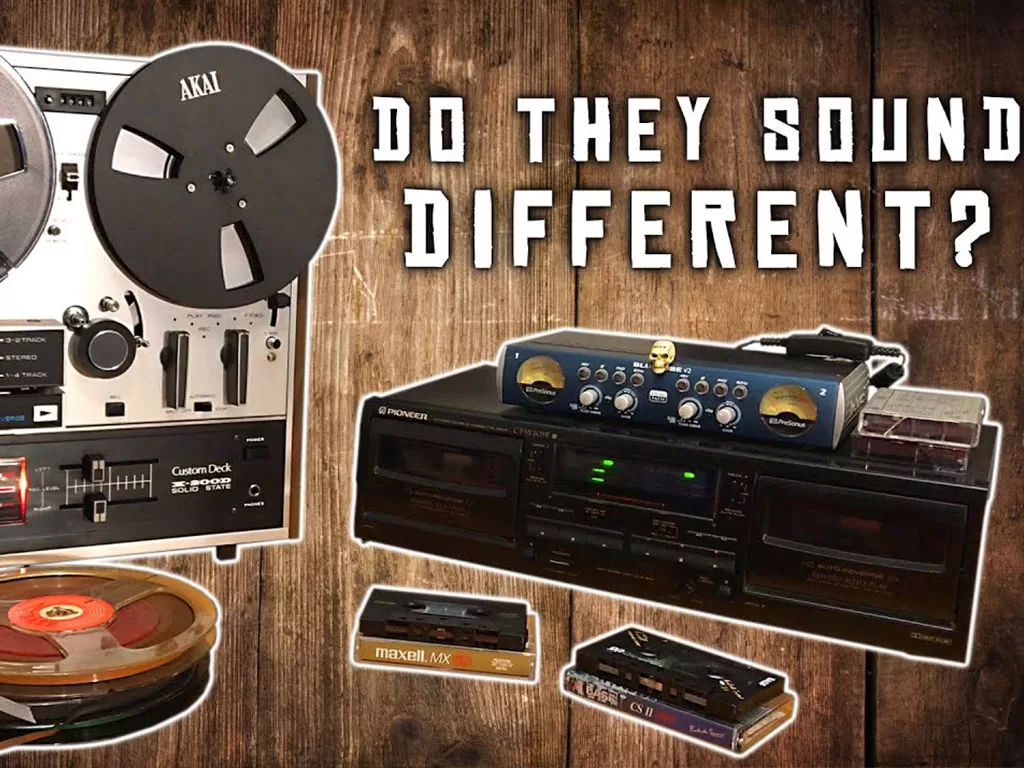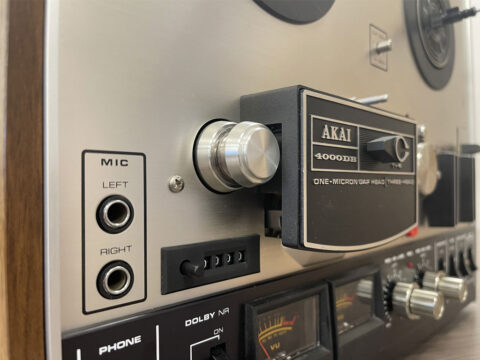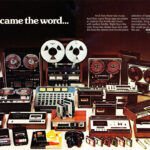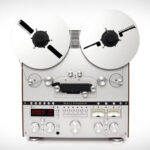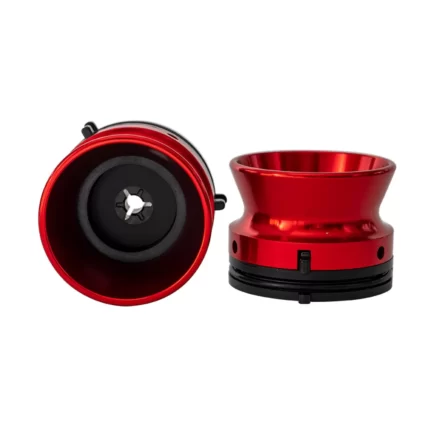First of all, I have to give credit to Nonjuror; he made a nice video comparing reel-to-reel vs. cassette. Can you hear the difference?
Check out and like his video or channel
When it comes to audio tapes, two analog formats dominate the conversation: reel-to-reel and cassette tapes. Both reel-to-reel and cassette tapes were groundbreaking audio technologies in their time, but they have distinct differences that set them apart.
Reel-to-reel tapes were the precursor to cassette tapes, first introduced in the 1940s and popularized in the 1950s. These tapes use an open reel and require a dedicated machine for playback. On the other hand, cassette tapes were developed in the 1960s as a more user-friendly alternative to reel-to-reel tapes. They come in a compact size and are compatible with portable players.
In this article, we will explore the differences between reel-to-reel and cassette tapes, their respective advantages and disadvantages, and offer guidance on which format may be best suited for different preferences.
Key Takeaways
- Reel-to-reel and cassette tapes are two analog audio formats with distinct differences.
- Reel-to-reel tapes were first introduced in the 1940s and require a dedicated machine for playback.
- Cassette tapes were developed in the 1960s and are more user-friendly and portable.
- Throughout the article, we will explore the advantages and disadvantages of each format and offer guidance on which may be best suited for different preferences.
The Rise of Reel-to-Reel Tapes
When it comes to audio quality, reel-to-reel tapes are hard to beat. They offer a level of sound fidelity that is simply unmatched by any other analog format. This is because reel-to-reel tapes use a wider magnetic tape and record at faster speeds, resulting in a more accurate representation of the original sound recording.
While reel-to-reel tapes were once the go-to format for professional recording studios, they fell out of favor with the introduction of cassette tapes in the 1960s. However, in recent years, there has been a resurgence of interest in reel-to-reel tapes among audiophiles and music enthusiasts who crave the highest level of sound quality.
One advantage of reel-to-reel tapes is their durability. They are less prone to degradation and have a longer lifespan than other analog formats. Additionally, reel-to-reel tapes allow for easy editing and splicing, making them a popular choice for sound engineers.
The Appeal of High-Quality Sound
Reel-to-reel tapes have gained a reputation for providing the purest and most accurate sound reproduction possible. Their appeal lies in the fact that they capture every nuance of a recording, from the subtlest details to the most dynamic range. For audiophiles who value high-quality sound above all else, reel-to-reel tapes are the ultimate choice.
Another advantage of reel-to-reel tapes is that they are not subject to the same level of compression as other formats. When music is recorded onto a digital format, it loses some of its sonic detail due to the compression process. Reel-to-reel tapes, on the other hand, do not undergo this process, preserving the full depth and richness of the original sound recording.
For music lovers who want to experience music the way it was meant to be heard – with all of its intricacies and nuances – reel-to-reel tapes are the perfect choice.
The Convenience of Cassette Tapes
While reel-to-reel tapes offer superior sound quality, cassette tapes have gained recognition for their convenience and portability. Unlike the bulky and cumbersome reel-to-reel tapes, cassettes are compact in size and can easily fit in your pocket, making them ideal for on-the-go listening.
Another advantage of cassette tapes is their simplicity. They are easy to use, requiring only a cassette player and a set of headphones or speakers. This ease of use made them a popular format for personal music collections and the perfect companion for road trips.
However, cassette tapes are not without their drawbacks. One of the biggest issues with cassette tapes is their susceptibility to wear and tear. The magnetic tape inside the cassette is delicate and can easily break or become tangled. Additionally, cassette tapes tend to degrade over time, resulting in a loss of sound quality.
Despite these issues, cassette tapes remain a beloved format among music enthusiasts, particularly for those who grew up listening to them. Their compact size and portability make them a convenient option for music lovers on the go, and their nostalgic appeal continues to keep them relevant in today’s digital age.
The Resurgence of Reel-to-Reel Tapes
While cassette tapes dominated the audio industry for several decades, a recent resurgence in the popularity of reel-to-reel tapes has surprised many. Despite the rise of digital music streaming services and the convenience of digital formats, music enthusiasts are turning back to the analog audio experience that can only be offered by reel-to-reel tapes.
One reason for this renewed interest is the unique sound quality found on reel-to-reel tapes. Analog audio formats are revered for their warmth and depth of sound, which cannot be fully replicated by digital media. Additionally, reel-to-reel tapes offer superior dynamic range and frequency response, making them ideal for audiophiles and music purists.
A Brief History of Reel-to-Reel and Cassette Tapes
Reel-to-reel tapes were first introduced in the 1930s and remained the dominant format for recorded audio until the introduction of cassette tapes in the 1960s. Reel-to-reel tapes were typically used by professionals for high-quality audio recording, while cassette tapes were marketed to consumers as a more affordable and convenient option.
Cassette tapes quickly gained popularity due to their small size and portability, as well as the ability to record and play back audio on the same machine. This allowed for the creation of mixtapes and the sharing of music between friends.
However, despite their advantages, cassette tapes were not known for their high-quality sound. The narrow tape width and slower recording speed resulted in lower fidelity audio compared to reel-to-reel tapes.
Reel-to-reel tapes remained popular among audiophiles and professionals throughout the 1970s and 1980s, even as cassette tapes became the dominant format for consumer use.
In the 1990s, the introduction of digital audio formats such as CDs and MP3s led to a decline in the use of both reel-to-reel and cassette tapes. However, in recent years, there has been a resurgence of interest in analog audio formats, particularly among music enthusiasts and collectors.
The Future of Reel-to-Reel and Cassette Tapes
While digital audio formats remain the dominant medium for recorded music, there is still a niche market for reel-to-reel and cassette tapes. Collectors and enthusiasts appreciate the unique sound and tactile experience of analog formats, and some artists have even released new music on cassette tapes as a nod to the past.
Whether reel-to-reel or cassette tapes will experience a full-scale revival remains to be seen. However, their historical significance and enduring appeal make them a fascinating chapter in the evolution of recorded audio.
Comparing Reel-to-Reel and Cassette Tapes: Which is Right for You?
When it comes to choosing between reel-to-reel and cassette tapes, both formats have their strengths and weaknesses. Ultimately, the decision comes down to personal preference and priorities. Consider the following factors when making your choice:
| Factor | Reel-to-Reel Tapes | Cassette Tapes |
|---|---|---|
| Sound Quality | Superior quality due to wider tape and faster speed, provides a more accurate representation of the original recording. | Lower quality due to smaller tape size and slower speed, may have hiss or distortion. |
| Accessibility | Requires a reel-to-reel player, which may be difficult to find and expensive to maintain. | Widely available and can be played on a variety of devices, from vintage cassette players to modern portable players. |
| Availability | Harder to find and produced in limited quantities, often only available as used or vintage items. | Still being produced, and more readily available in stores and online markets. |
| Convenience | Bulky and heavy, requires frequent rewinding and fast-forwarding to find specific tracks. | Compact and lightweight, allowing for easy portability and convenient track selection. |
It is important to note, however, that sound quality is subjective and some may prefer the nostalgic “warmth” of cassette tapes over the ultra-precise sound of reel-to-reel tapes. Additionally, the cost and availability of equipment may play a role in the decision making process.
Conclusion:
Ultimately, the decision between reel-to-reel and cassette tapes comes down to personal preference and priorities. While reel-to-reel tapes offer superior sound quality and durability, they may be harder to find and require specialized equipment. Cassette tapes, on the other hand, offer convenience and accessibility at the cost of sound quality.
Conclusion
In conclusion, the reel-to-reel vs. cassette tapes debate ultimately comes down to personal preference. Those who prioritize sound quality and durability may prefer reel-to-reel tapes, while others may value convenience and accessibility offered by cassette tapes.
Regardless of which format you choose, it is clear that both reel-to-reel and cassette tapes played a significant role in the history of audio technology. From their early development to their recent resurgence, these analog formats continue to hold a special place in the hearts of music enthusiasts and audiophiles alike.
Embrace the Audio Nostalgia
As technology advances and digital formats continue to dominate the market, it’s important to remember the unique listening experience that analog tapes provide. Whether you’re a seasoned collector or a newcomer to the world of audio nostalgia, there’s no denying the magic that can be found in the crackling sound of a tape playing on a vintage player.
So go ahead and dust off those old tapes, or discover a new favorite format. The world of analog audio awaits.
FAQ
Q: What is the difference between reel-to-reel and cassette tapes?
A: Reel-to-reel and cassette tapes are both analog audio formats, but they have some key differences. Reel-to-reel tapes are larger and offer superior sound quality compared to cassette tapes. They are often preferred by audiophiles and music enthusiasts.
Q: What are the advantages of reel-to-reel tapes?
A: Reel-to-reel tapes offer several advantages, including superior sound quality and durability. They are known for their ability to capture and reproduce audio with exceptional clarity and detail.
Q: Are cassette tapes more convenient than reel-to-reel tapes?
A: Yes, cassette tapes are more convenient due to their compact size and easy portability. They can be played in portable cassette players, making them a popular choice for on-the-go listening.
Q: How does the sound quality of cassette tapes compare to reel-to-reel tapes?
A: While cassette tapes are more convenient, the sound quality is generally lower compared to reel-to-reel tapes. Reel-to-reel tapes offer a more robust and dynamic sound reproduction, making them a preferred choice for audiophiles.
Q: Why have reel-to-reel tapes experienced a resurgence?
A: Reel-to-reel tapes have experienced a resurgence in recent years due to the nostalgia and appreciation for analog sound. There is a niche market of reel-to-reel enthusiasts who value the high-quality audio and unique listening experience they provide.
Q: What is the historical background of reel-to-reel and cassette tapes?
A: Reel-to-reel tapes have been around since the early 20th century and were the primary audio format until the rise of cassette tapes in the 1960s. Cassette tapes became popular due to their compactness and ease of use.
Q: How do reel-to-reel and cassette tapes compare in terms of sound quality, accessibility, and availability?
A: Reel-to-reel tapes generally offer superior sound quality, but they are less accessible and available compared to cassette tapes. Cassette tapes are more widely available and can be played in various devices, but their sound quality is lower.


